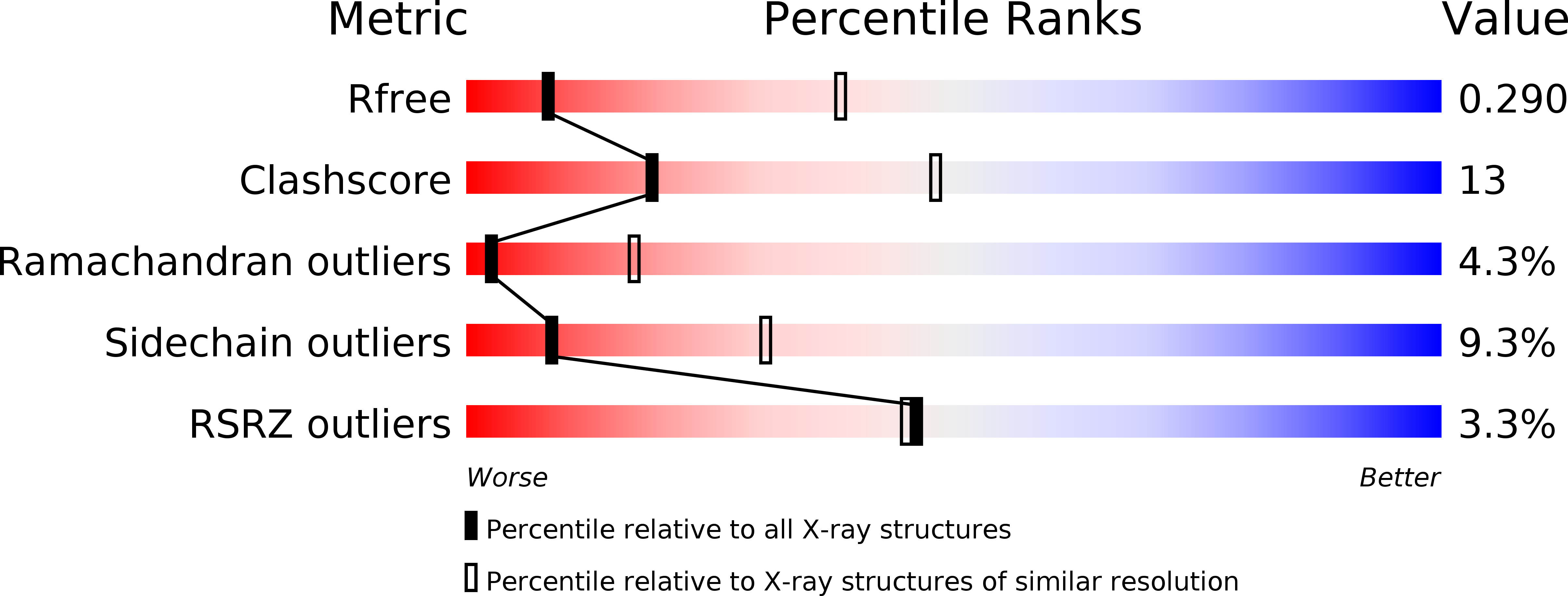
Deposition Date
2007-05-09
Release Date
2007-10-02
Last Version Date
2023-08-30
Entry Detail
PDB ID:
2PV3
Keywords:
Title:
Crystallographic Structure of SurA fragment lacking the second peptidyl-prolyl isomerase domain complexed with peptide NFTLKFWDIFRK
Biological Source:
Source Organism:
Escherichia coli (Taxon ID: 562)
Host Organism:
Method Details:
Experimental Method:
Resolution:
3.39 Å
R-Value Free:
0.29
R-Value Work:
0.28
R-Value Observed:
0.28
Space Group:
P 32 2 1


